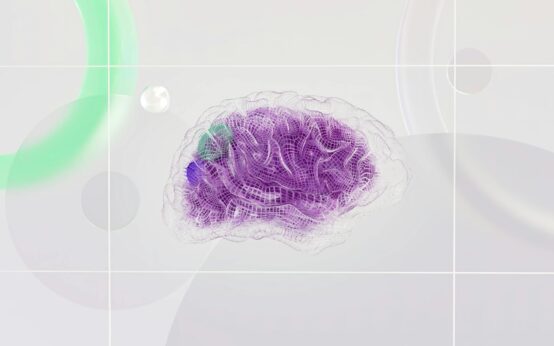Unlocking Our Digital World: The Real-World Natural Language Processing Applications You Use Every Day
Ever wonder how your phone finishes your sentences? Or how Gmail knows that sketchy email is definitely spam? It’s not magic. It’s a powerful branch of artificial intelligence quietly running in the background of your life. We’re talking about the incredible world of natural language processing applications, the technology that bridges the gap between human language and computer understanding. It’s everywhere, and frankly, modern life wouldn’t be the same without it.
You might think of NLP as something reserved for data scientists in a lab coat, but the truth is far more interesting. It’s the engine behind your favorite smart assistant, the translator in your pocket, and the reason customer service is getting faster (and sometimes, eerily smarter). It’s about teaching computers not just to read words, but to understand context, sentiment, and intent. That’s a huge deal. Let’s pull back the curtain and see how this technology is actively shaping our world, from the mundane to the monumental.
Key Takeaways
- NLP is Everywhere: You interact with NLP daily through features like autocorrect, spam filters, and smart assistants like Siri and Alexa.
- Business Transformation: Companies use NLP for sentiment analysis to gauge customer opinion, power chatbots for instant support, and analyze market trends.
- Specialized Impact: NLP is revolutionizing fields like healthcare by analyzing clinical notes and finance by detecting fraudulent activity.
- Core Goal: The ultimate aim of NLP is to help computers understand, interpret, and generate human language in a way that is both meaningful and useful.
So, What Exactly *Is* Natural Language Processing?
Before we jump into the cool applications, let’s get on the same page. What is this stuff? At its core, Natural Language Processing (NLP) is a field of AI that gives machines the ability to read, understand, and derive meaning from human languages. Think about how you’re reading this sentence. Your brain is effortlessly processing words, sentence structure, and the underlying meaning. For a computer, this is an incredibly complex task.
Human language is messy. It’s filled with slang, sarcasm, typos, and ambiguous phrases. “I’m fine” can mean a dozen different things depending on the context. NLP uses algorithms and models to break down language into a structured format that a machine can actually work with. It involves several key steps:
- Parsing: Analyzing grammatical structure.
- Tokenization: Breaking text into smaller units (words or sentences).
- Sentiment Analysis: Determining the emotional tone (positive, negative, neutral).
- Named Entity Recognition (NER): Identifying key information like names, places, and dates.
Essentially, NLP is the translator between our messy, beautiful, chaotic human world and the rigid, logical world of computers. And the better this translator gets, the more powerful its applications become.
The NLP You Use Every Single Day (Without Realizing It)
You’re a heavier user of NLP than you probably think. It’s so seamlessly integrated into our daily tech that we often take it for granted. These aren’t futuristic concepts; they are practical tools making your life easier right now.
Predictive Text and Autocorrect
That little feature that saves you from embarrassing typos and suggests the next word in your text message? That’s NLP. By analyzing massive amounts of text data, your phone’s keyboard learns common word sequences and grammatical patterns. It’s not just matching words; it’s predicting your intent based on the context of your sentence. It’s the unsung hero of fast, coherent texting, and it’s getting smarter all the time.
Smart Assistants: Siri, Alexa, and Google Assistant
“Hey Siri, what’s the weather today?” When you speak to a virtual assistant, a complex NLP pipeline kicks into gear. First, speech recognition converts your voice into text. Then, NLP algorithms work to understand the *intent* behind your words. It recognizes that “weather” is the subject and “today” is the time parameter. It then finds the relevant information and uses Natural Language Generation (NLG) to give you a spoken, human-like response. Every time you set a timer or ask for a fact, you’re having a direct conversation with an NLP model.

Email Spam Filters
Your inbox would be an absolute nightmare without NLP. Spam filters have moved far beyond simply looking for suspicious keywords. Modern filters use sophisticated NLP models to analyze the content and context of emails. They look for signals like unusual phrasing, grammatical errors typical of scams, a sense of urgency (“act now!”), and compare the email’s structure to millions of known spam and phishing attempts. This is text classification in action—a classic NLP task that acts as your inbox’s silent guardian.
Machine Translation
Google Translate, Microsoft Translator, and similar tools are prime examples of NLP’s power. Early translation tools were often clunky, translating word-for-word and producing awkward, often comical results. Today’s systems use what’s called Neural Machine Translation (NMT). These models look at the entire sentence at once, capturing context and nuance to provide much more accurate and natural-sounding translations. Whether you’re navigating a foreign country or reading a website in another language, NLP is what breaks down those communication barriers.
Game-Changing Natural Language Processing Applications in Business
Beyond our personal devices, NLP is a transformative force in the business world. Companies are leveraging it to understand customers, automate processes, and make smarter, data-driven decisions. It’s a massive competitive advantage.
Understanding Your Customers: Sentiment Analysis
The internet is a firehose of customer opinions—reviews, social media posts, support tickets, survey responses. It’s impossible for a human to read it all. This is where sentiment analysis comes in. NLP algorithms can sift through thousands of mentions a minute and classify them as positive, negative, or neutral. But it goes deeper than that. It can identify specific aspects of a product that people love or hate (e.g., “the battery life is amazing, but the camera is disappointing”). This gives companies an unfiltered, real-time look into the voice of the customer, allowing them to address issues and double down on what works.
Chatbots and Virtual Assistants
You’ve probably interacted with one today. Customer service chatbots are one of the most visible business applications of NLP. Instead of waiting on hold, customers can get instant answers to common questions 24/7. Early chatbots were frustratingly rigid, but modern ones use NLP to understand user queries in natural language. They can handle a wide range of tasks, from tracking a package and resetting a password to even making product recommendations. This frees up human agents to handle more complex, high-touch issues, improving efficiency and customer satisfaction.
Market Intelligence and Trend Spotting
What are people talking about in your industry? What new trends are emerging? NLP tools can analyze news articles, financial reports, industry journals, and social media chatter to identify patterns and emerging topics. For example, a CPG company might use NLP to spot a rising interest in a specific ingredient, allowing them to develop a new product ahead of the competition. It’s like having a team of thousands of analysts reading everything, all at once.
The Critical Role of NLP in Specialized Fields
The impact of NLP isn’t limited to tech and business. It’s making profound contributions in highly specialized and regulated industries, solving problems that were once considered intractable.
Healthcare’s AI Revolution
Healthcare is drowning in unstructured data. A patient’s story is often locked away in doctors’ notes, lab reports, and clinical trial documents. NLP is changing that. Here’s how:
- Clinical Documentation: NLP can scan a physician’s narrative notes and automatically extract key information like diagnoses, medications, and symptoms, then structure it for an Electronic Health Record (EHR). This saves doctors from hours of administrative work.
- Drug Discovery: Researchers can use NLP to analyze millions of research papers and clinical trial results to find connections and patterns that could lead to new drug candidates, drastically accelerating the research process.
- Predictive Analytics: By analyzing patient records, NLP can help identify patients who are at a high risk for certain conditions, allowing for earlier, more effective interventions.

Finance: Guarding Against Fraud and Guiding Trades
In the fast-paced world of finance, information is money, and security is paramount. NLP helps on both fronts. Financial institutions use NLP to scan transactions and communications for signs of fraudulent activity or money laundering, flagging suspicious patterns that a human might miss. Furthermore, algorithmic trading firms use NLP to perform sentiment analysis on financial news and social media. A sudden spike in negative sentiment about a company could trigger an automated sell order, allowing firms to react to market changes in microseconds.
Legal Tech: Sorting Through Mountains of Documents
Legal work involves enormous amounts of text. During the discovery phase of a lawsuit, lawyers may have to sift through millions of documents to find relevant evidence. NLP-powered eDiscovery tools can automate this process, scanning documents for key concepts, names, and timelines. This not only saves thousands of hours of manual labor but also reduces the risk of human error. Similarly, NLP is used for contract analysis, automatically identifying key clauses, risks, and non-standard terms in legal agreements.
The Future is Conversational: Where is NLP Headed?
As powerful as NLP is today, we’re still just scratching the surface. The models are becoming larger and more sophisticated. Think of models like GPT-4 and beyond. They demonstrate a much deeper understanding of context and nuance, allowing for more creative and complex tasks.
We’re moving toward a future of hyper-personalization. Imagine an AI assistant that truly knows your preferences, communication style, and needs, or educational software that adapts its teaching method to your learning style in real-time. The line between human and machine conversation will continue to blur.
Of course, with this power comes responsibility. Ethical considerations around bias in training data, misinformation, and privacy are more important than ever. The future of NLP isn’t just about building more powerful models; it’s about building them responsibly.
Conclusion
From the autocorrect that fixes your texts to the complex algorithms helping doctors discover new treatments, natural language processing is no longer a futuristic concept. It’s a foundational technology woven into the fabric of our digital lives. It’s the essential bridge that allows us to communicate with technology on our own terms, using our most natural tool: language. The next time your phone understands your mumbled request or a chatbot solves your problem, take a moment to appreciate the incredible complexity working behind the scenes. The conversation between humans and machines has truly begun, and it’s only going to get more interesting.
FAQ
What’s the difference between NLP, NLU, and NLG?
Think of them as a family. NLP (Natural Language Processing) is the overarching field. NLU (Natural Language Understanding) is a subset of NLP focused on the ‘reading’ part—understanding the meaning, intent, and sentiment of the text. NLG (Natural Language Generation) is the ‘writing’ part—constructing human-like sentences to present information or respond to a query. So, a chatbot uses NLU to understand your question and NLG to formulate its answer.
Is NLP difficult to learn?
It can be challenging, as it sits at the intersection of computer science, linguistics, and statistics. However, with the abundance of open-source libraries like spaCy and NLTK in Python, and powerful APIs from major tech companies, it’s more accessible than ever. You don’t need a Ph.D. to start building simple NLP applications, but deep mastery requires a solid understanding of the underlying concepts.
Can NLP understand sarcasm?
This is one of the toughest challenges in NLP! Sarcasm often relies heavily on context, tone of voice, and real-world knowledge that machines lack. While models are getting much better at detecting it by looking for contextual clues (like a positive sentence with negative emojis or a mismatch between the statement and the situation), it’s still an active area of research. Perfect sarcasm detection remains a holy grail for NLP.



 Deep Learning Breakthroughs: The AI That’s Changing Our World
Deep Learning Breakthroughs: The AI That’s Changing Our World  Top AI Tools for Freelancers to Boost Productivity (2024)
Top AI Tools for Freelancers to Boost Productivity (2024)  Neural Networks Explained: A Beginner’s Guide to AI
Neural Networks Explained: A Beginner’s Guide to AI  AI is Transforming Industries: A Deep Dive for 2024
AI is Transforming Industries: A Deep Dive for 2024  AI Job Displacement: Friend or Foe for Your Career?
AI Job Displacement: Friend or Foe for Your Career?  AI in Agriculture: How Tech is Revolutionizing Farming
AI in Agriculture: How Tech is Revolutionizing Farming  How to Set Up a Node: The Ultimate Guide
How to Set Up a Node: The Ultimate Guide  Crypto Arbitrage Trading: A Beginner’s Guide (2024)
Crypto Arbitrage Trading: A Beginner’s Guide (2024)  The Business of NFTs: How Top Brands Are Using Them
The Business of NFTs: How Top Brands Are Using Them  What Are ZK-Proofs? A Guide to Blockchain Privacy
What Are ZK-Proofs? A Guide to Blockchain Privacy  DeFi’s Hurdles: Security, Scalability & Regulation
DeFi’s Hurdles: Security, Scalability & Regulation  How to Read a Crypto Whitepaper: A Beginner’s Guide
How to Read a Crypto Whitepaper: A Beginner’s Guide